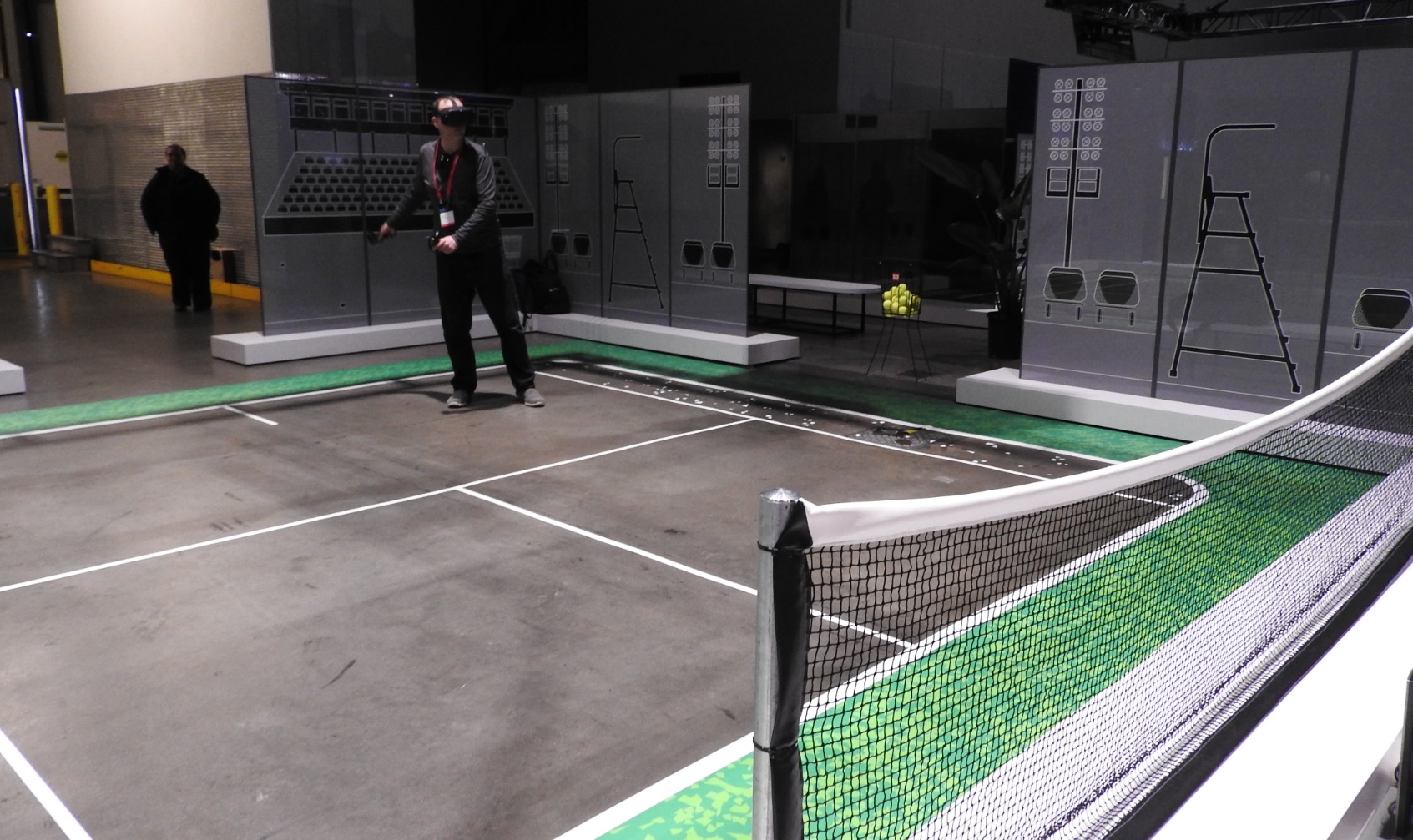Facebook showed a demo of its new Oculus Quest virtual reality headset on Wednesday, and it could be quite liberating because it gets rid of those pesky wires that have kept VR tethered.
The Oculus Quest will arrive as a standalone product — you won’t need to connect it to a computer to play with it — for $400 in the spring of 2019. But I got a chance to play hands-on with it today at the Oculus Connect 5 event in San Jose, California. I played against Kellee Santiago of Google in the video embedded in this post, and it was like playing Wii Sports Tennis, but in VR.
The Oculus team cleared out a lot of space for the demo on the floor of the San Jose Convention Center, where they set up faux tennis courts that were maybe a quarter of the size of the real thing.
The Oculus Quest uses Guardian technology that can sense walls and other obstacles. When I fired it up, they made sure I knew what would happen if I came near a wall. If you do that, a grid of blue wires comes up and tells you that you’re too close and need to back up. (I did this a couple of times when I played the VR tennis game and Super Hot on Quest as well).
I put the Oculus Touch hand controllers on, which have been redesigned so the sensors are better at detecting movement and the room’s borders. I used my middle finger to grab my racket, and then I swung my arm back and forth to swing at a ball. The tutorial took me a minute to learn how to play.
And then we went right into the match. Kellee served first, and I returned the ball. It worked fine. I swung at a ball that seemed out of my reach, and the simulation was quite forgiving, as if I had a four-feet long arm, and I smacked the ball back.
When you serve, you don’t throw a ball up in the air and slam it down. The game made it much easier. You simply swing sideways at a ball when it appears at waist level and starts moving back and forth. So you just simply hit the ball to a part of the court where you want it to go.
This forces the other player to move, either swinging with a backhand or forehand. Kellee later said she had it easier because she had a smaller space to play on her side, and my court was larger, making me get more exercise moving around the court.
I enjoyed it, as I was able to mimic real tennis swings in trying to bat the ball back and forth. If you hit the ball at a question mark, your racket would transform into something else, like a ping pong paddle or a golf club. The ball could also transform into something else. We had some good rallies going back and forth, but Kellee won the match 5-3.

Above: Oculus Quest tennis is like playing Wii Sports Tennis in VR.
The best thing was the freedom of movement. You can move your arm from low to high, like when you’re really swinging a racket, without worrying you’re going to whack a wall or get stuck in your own cord. The graphics were cartoony but sharp, and the latency of the system was good. If I swung the racket, it connected with the object. That felt good.
I also played Dead & Buried, Super Hot, and Face Your Fears 2 on the Oculus Quest. All of them were great experiences, enough to make me believe that this could be a really awesome platform for games in the future. I still don’t know how much battery life it has, but we’ll find that out in time.
